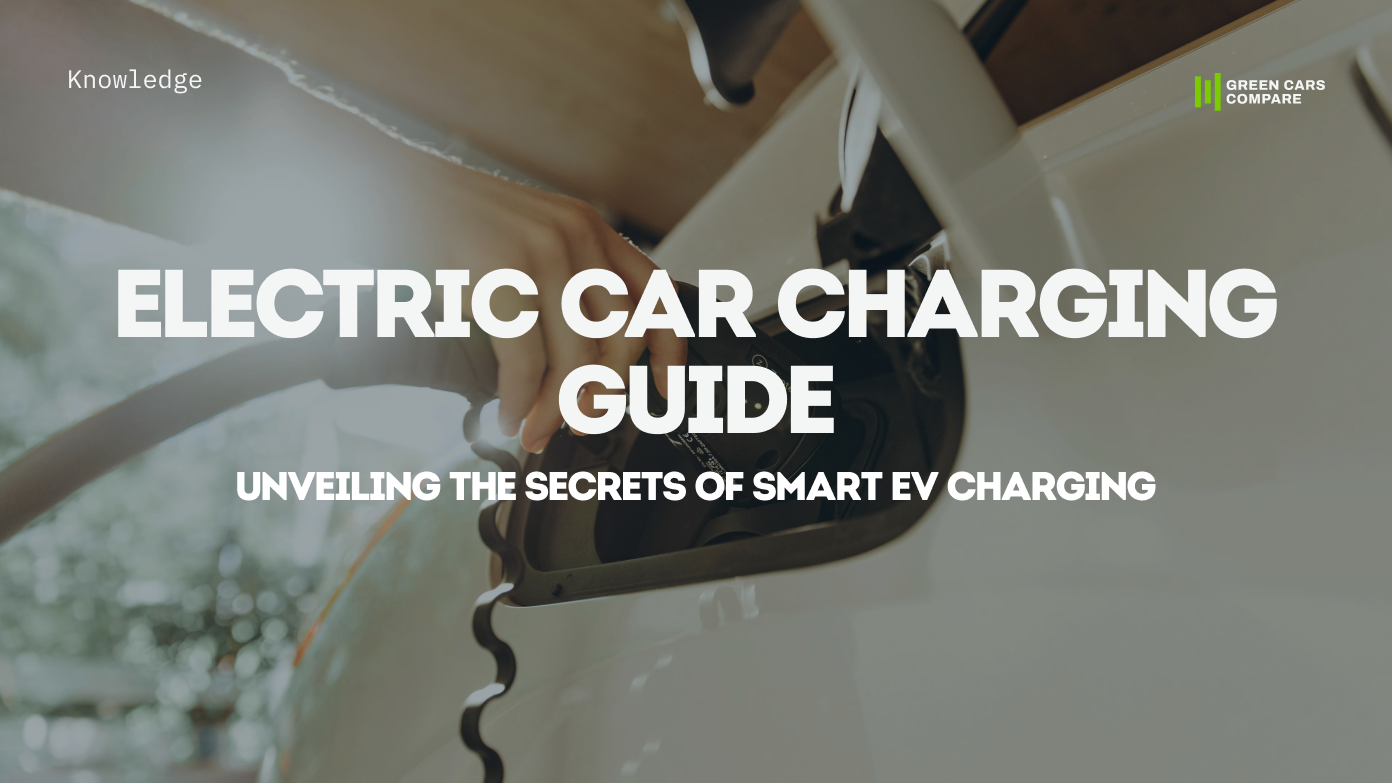Electric Car Charging Guide. Unveiling the Secrets of Smart EV Charging

The world of EV charging can feel overwhelming. This guide breaks it down for you, offering practical strategies to optimize your charging routine and minimize costs. Learn about different charging types, discover how to take advantage of off-peak electricity rates, and extend the life of your battery. With this knowledge, you'll be well-equipped to navigate the world of EV charging with confidence.
Table of Contents
Understanding Charging Types
EV owners have two main charging options: at-home stations for convenient overnight charging, and public stations for on-the-go top-ups, usually for a fee.
There are two main types of EV charging:
- Slow charging — Level 1 (AC) and Level 2 (AC)
- Fast charging — Level 3 (DC)
The primary distinction between AC and DC charging lies in how the electricity is delivered to the vehicle's battery. AC charging requires the vehicle's on-board charger to convert the alternating current into direct current before it can be stored in the battery. This conversion process inherently limits charging speed. Conversely, DC charging bypasses this conversion step, allowing for much faster charging rates.
Level 1 Charging (AC)
Level 1 charging offers undeniable charm — it's the classic wall outlet we all know. It's also the simplest and most affordable option for topping up your EV battery as it eliminates the need for special equipment — just plug it in and go!
However, its biggest strength is also its weakness — simplicity and ubiquity comes at the cost of speed. Don't expect lightning-fast charging here. You'll typically gain a mere 5-8 miles (10-12 km) of range per hour.
Despite the slow pace, Level 1 is ideal for drivers with short commutes or those who don't need a full charge every day. It's also a perfect fit for plug-in hybrids (PHEVs) due to their smaller battery size.
The EV’s on-board charger converts AC power fr om the outlet to DC power to charge the battery. Most modern on-board chargers can easily handle Level 1 charging without limiting power.
In addition, Level 1 charging is also a lifesaver, as any standard outlet can provide emergency charging, offering peace of mind on the road.
However, for fully electric vehicles seeking a full charge, Level 1 charging is a marathon, not a sprint. It can take days to replenish a depleted battery, making it more suitable for emergencies or topping off a partially depleted battery.
Advantages: Simple and affordable, universally available, no special equipment installation, well-suited for PHEVs and short commutes.
Disadvantages: Extremely slow, impractical for fully charging most EVs in a reasonable amount of time.
Level 2 Charging (AC)
Level 2 charging represents a significant leap forward in terms of EV charging convenience. Imagine the ability to fully recharge your car overnight, just like your phone.
That's the reality offered by Level 2 chargers, which utilize a 240V outlet in the USA or a 3-phase socket in Europe. This translates to charging speeds of 15-60 miles (25-100 km) of range per hour, allowing you to spend less time tethered and more time on the road.
The speed boost of Level 2 charging comes with an upfront investment. Expect to pay between $400 and $1,500 for the charger itself, plus installation costs. These can vary depending on your home's electrical setup and whether rewiring is needed.
There's a wide range of EVSE (Electric Vehicle Supply Equipment) manufacturers to choose from, including ChargePoint, Enel X, Grizzl-E and Siemens. Many even offer recommendations for local installers.
Similar to Level 1, the on-board charger converts AC power to DC, but at a faster rate due to higher voltage and amperage. The capacity of the on-board charger can limit the charging speed. It's essential to consider this limitation when selecting a home charger to avoid paying extra for charging power beyond the vehicle's capabilities.
The upfront cost of a Level 2 charger can be significantly reduced by taking advantage of incentives offered by some states, municipalities, and utilities. To find out if you qualify for any rebates or programs in your area, check out the Green Cars Compare EV Incentives Map.
Many Level 2 chargers are also available in public areas for a very low cost per minute.
Advantages: Faster charging (overnight), wide availability, financial inventives.
Disadvantages: Upfront cost, installation complexity.
Level 3 Charging (DC Fast Charging)
Level 3 chargers, also known as DC Fast Chargers (DCFC) are the public charging champions. They offer the ultimate charging speed for EVs, adding 3-20 miles (5-30 km) of range per minute.
Strategically located at highway rest stops, these stations provide a convenient option for replenishing your battery during long journeys.
While convenient, frequent DC charging can shorten your battery's lifespan. It's best used for public charging on the go, not as your primary charging solution.
Unlike AC charging, DC fast chargers deliver power directly to the battery, bypassing the on-board charger. However, it's important to note that the battery's DC charging capability can limit the charging speed. An old vehicle with a lower-capacity battery may not be able to accept as much power as a modern vehicle with a higher-capacity battery or more advanced charging technology (e.g., 800V architecture).
In the US, Level 3 chargers use three common connector types – CCS Type 1, CHAdeMO, and Tesla (NACS). Europe keeps things a bit simpler, using primarily CCS Type 2 and CHAdeMO. Think of them as different languages for the charger to speak to your car. While some stations offer versatility with multiple connectors, your car can only understand one. So, before plugging in, make sure they're speaking the same language or use an adapter.
Want to dive deeper into EV charging standards? Check out this article for a more comprehensive breakdown.
Advantages: Ultra-fast charging, convenient location, ideal for quick recharge during long trips.
Disadvantages: More expensive than Level 2, frequent use can shorten the battery lifespan, connector compatibility issues.
Wh ere to Charge
Now that you're familiar with the different charging types, let's explore where you can actually plug in your EV:
- Home Charging: Plug in at home! Electric vehicles (EVs) can be charged overnight or whenever you park using either a Level 1 or Level 2 charger. Level 1 chargers are basic cords that plug into a regular outlet, while Level 2 chargers are more powerful and require professional installation due to the higher voltage.
- Workplace Charging: More and more workplaces are offering EV charging as a perk for employees. This is a win-win! Employers get to show their commitment to sustainability, and employees get convenient and potentially cheaper charging. Workplace charging can be free, or some employers may have a fee system to cover costs.
- Public Charging: Hitting the road? Public charging stations are your friend, especially for long trips. These stations typically offer Level 2 or even faster Level 3 charging, and costs can vary. Some stations, like those at government buildings or malls, might even be free! To use public stations, you may need to sign up with the provider beforehand. We recommend to use the US Department of Energy's station locator to find the nearest DC fast chargers.
Saving Time and Money
Charging your EV strategically can significantly impact your wallet. Here are key tactics to maximize your savings and unlock the full cost-efficiency of electric driving:
- Charge at home at night: Many utility companies offer lower electricity rates at night. Plug in overnight and wake up to a fully charged EV and a happy wallet. Some EVs, like Teslas, even let you schedule your charging, making it a breeze.
- Use free and discounted charging stations: Supermarkets, malls, and other businesses are increasingly offering free or discounted EV charging stations. Take advantage of these while you grab groceries or browse stores.
- Extend your battery life: Experts recommend keeping your battery level between 20% and 80% for optimal charging performance and longer battery life. This extends your battery's health, especially when using Level 3 DC fast chargers which are best suited for quick top-ups, not full charges to 100%.
- Stay informed with EV charging apps: Don't let range anxiety hold you back. Utilize EV charging apps (e.g. PlugShare, ChargeHub) to discover stations near you. These apps provide real-time data on charger availability, pricing, and even user reviews, empowering you to make informed decisions and keep your electric journey smooth.
- Consider installing a Level 2 charger: Installing a Level 2 charger at home or your workplace can significantly reduce your charging costs and eliminate the need to rely on public charging stations. By taking advantage of off-peak electricity rates, you can save money and enjoy the convenience of charging your EV whenever you need to. To see if you qualify for any local EV charging incentives, explore the Green Cars Compare EV Incentives Map.
Utilize the Green Cars Compare Charging Calculator to estimate charging time, rate, and cost based on your specific EV model, desired charge level, and electricity rates. This handy tool empowers you to make informed decisions and maximize your savings.


Discussion